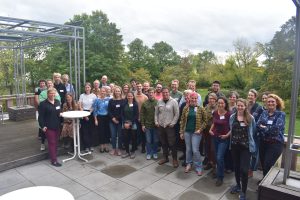
Final event of the ECO²SCAPE project in Leipzig
On the 26th of September 2024 the final event of the ECO²SCAPE project under the topic “Shaping the future: Co-design for more biodiversity in agricultural
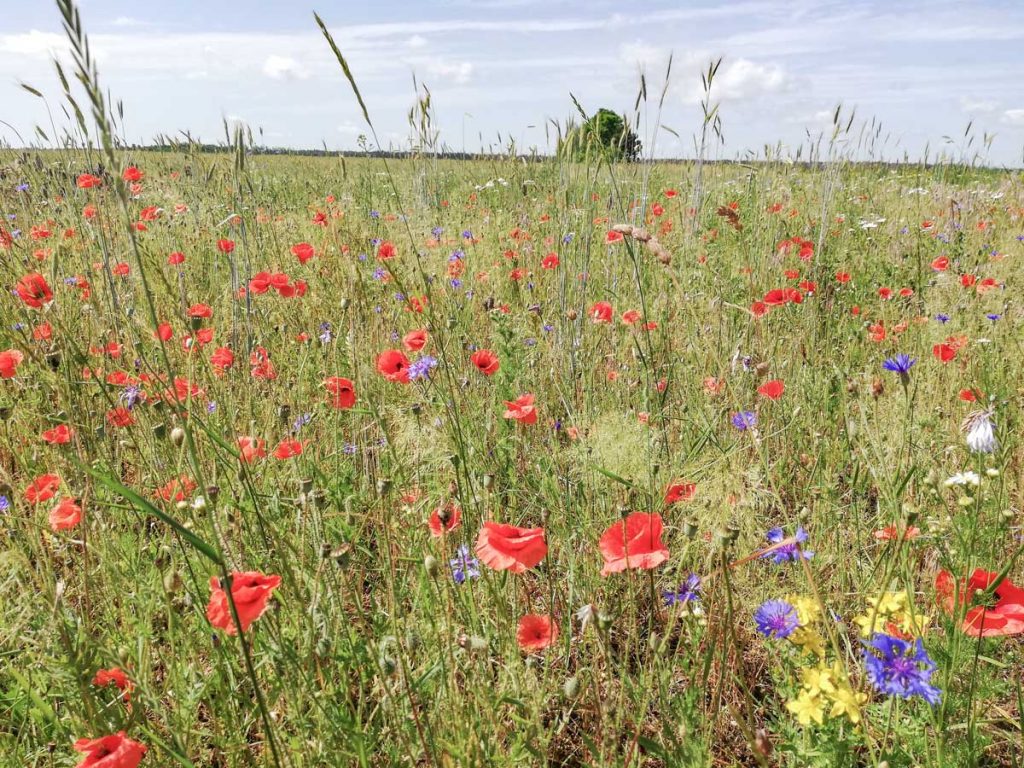
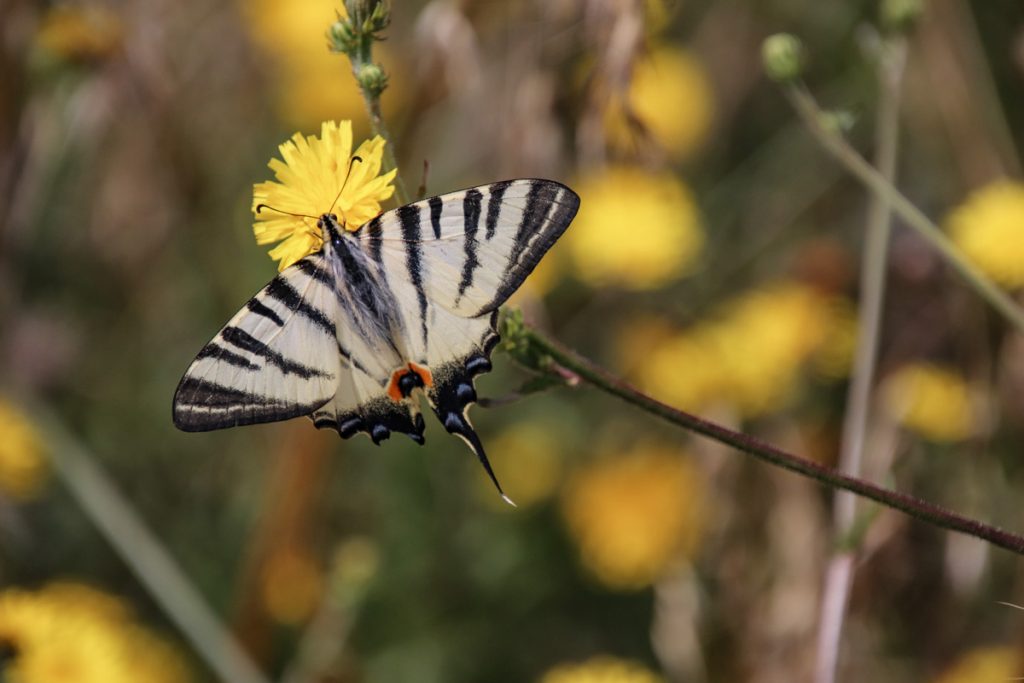
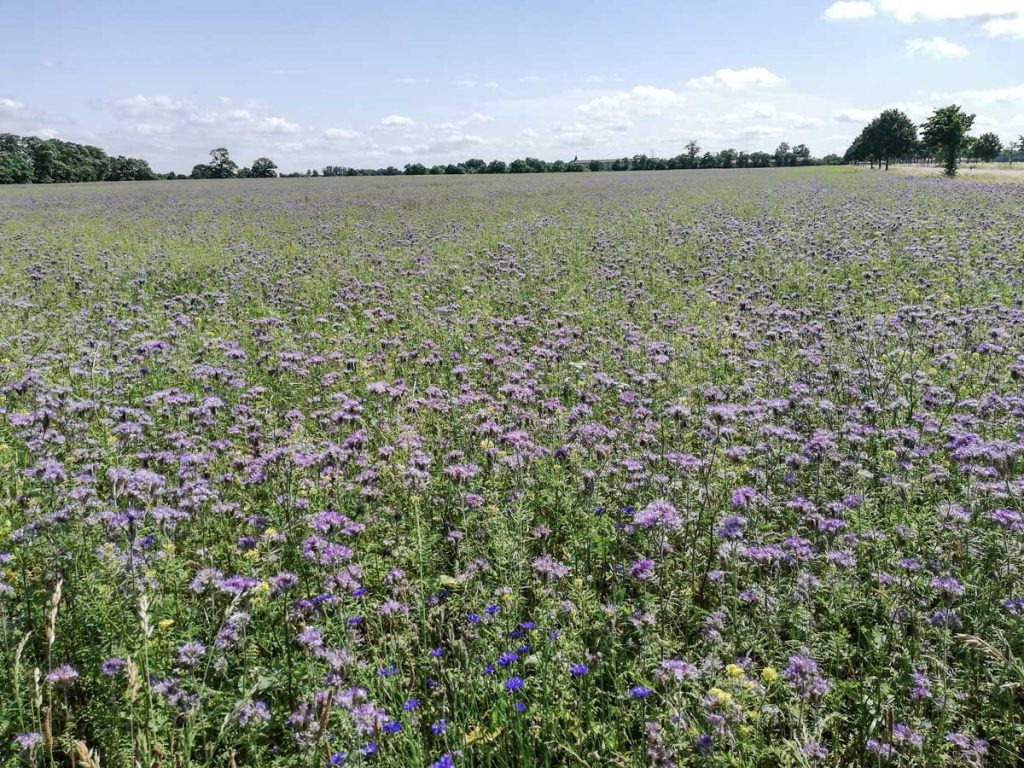
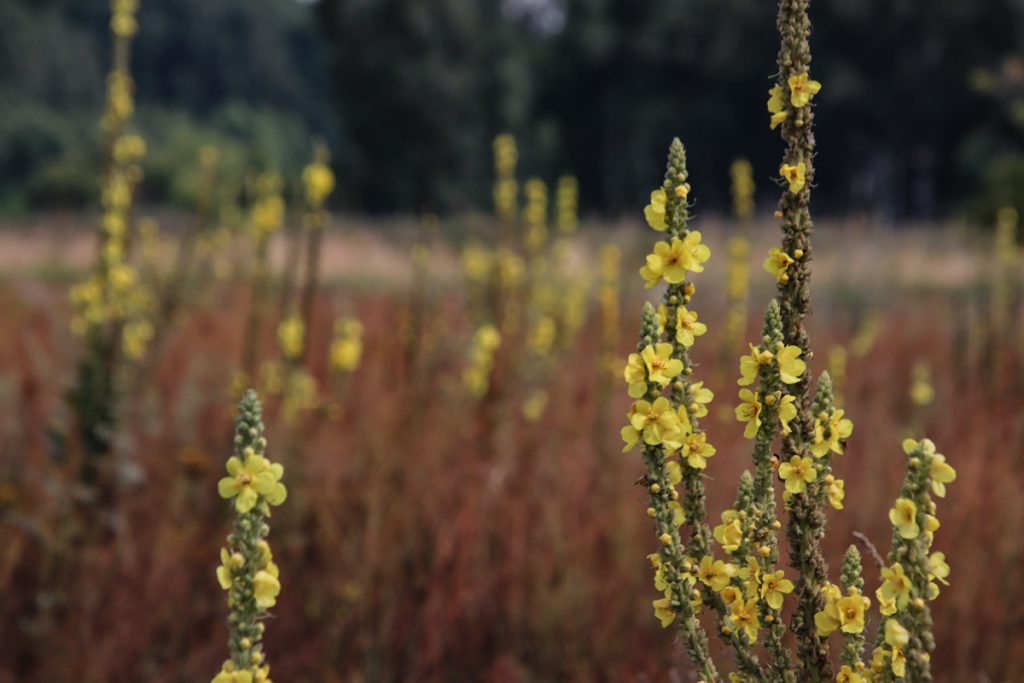
The aim of ECO²SCAPE is to generate the necessary system and action knowledge to maintain and enhance the value of biodiversity and ecosystem services in cultural landscapes. The research is based on the concept of multifunctionality of landscapes, in which perspectives and preferences regarding biodiversity and ecosystem services of different stakeholders are considered and integrated. In an interdisciplinary research approach, ECO²SCAPE further develops current methods from the fields of agricultural sociology, political science, ecoacoustics, machine learning, landscape ecology, environmental economics and ecological-economic optimization and links them in an innovative way. ECO²SCAPE thus develops practice-relevant approaches and policy recommendations for the conservation of biodiversity and ecosystem services (especially result-based and cooperative reward) and brings them to pilot implementation. This is done by considering ecological, economic and social frameworks and governance structures in the development of measures and policy instruments, e.g. in the context of acceptance measurement. At the same time, it is investigated in which local governance structures measures – also outside of policy instruments – can be initiated and implemented in the model region in the future.
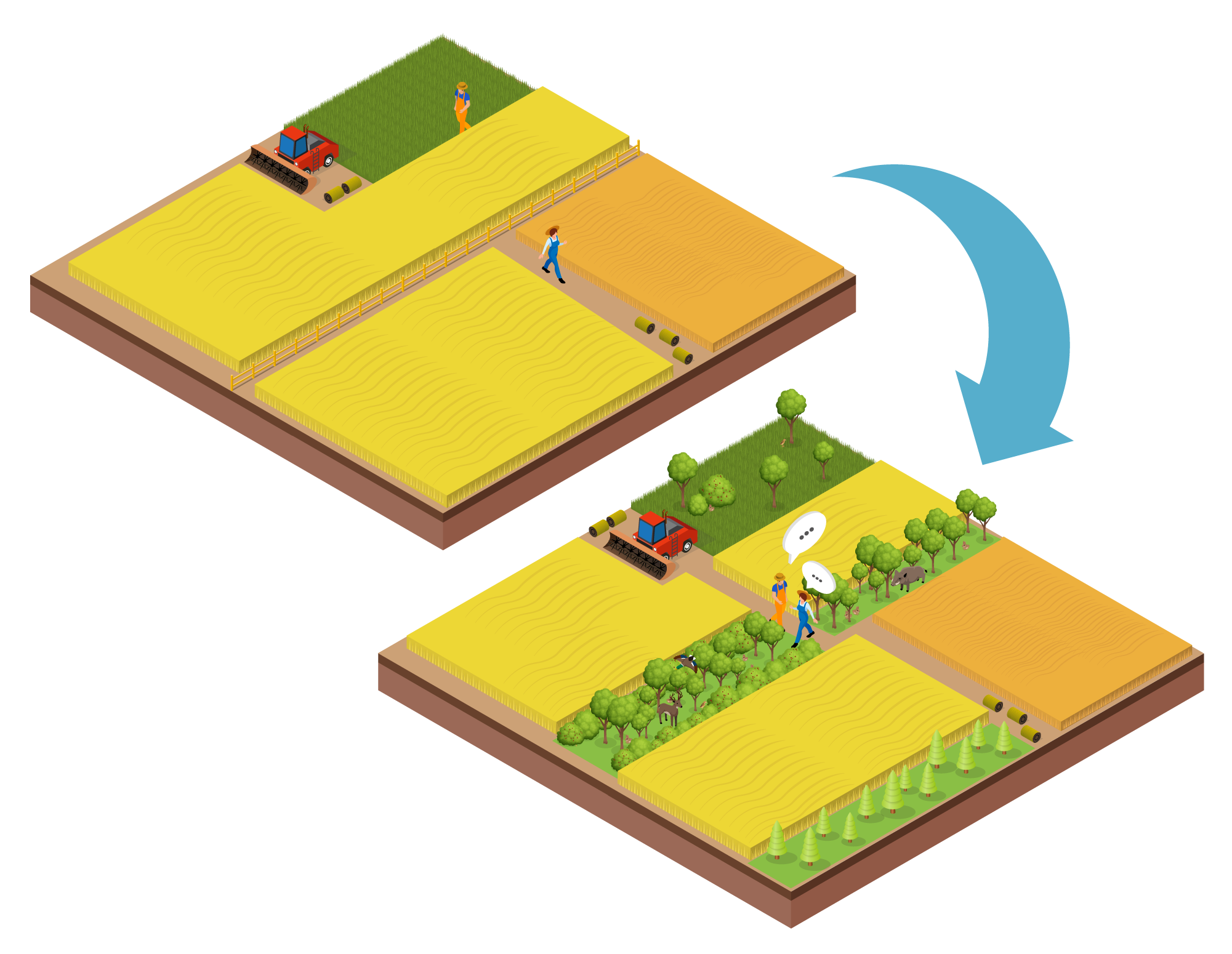
One focus of the project is the coordinated development of measures that work together at the landscape level and thus have a greater impact on biodiversity than measures taken by individual farms. To implement such measures, farmers must cooperate and establish biotope networks. Examples of cooperative measures are contiguous green strips or the joint maintenance or creation of hedges.
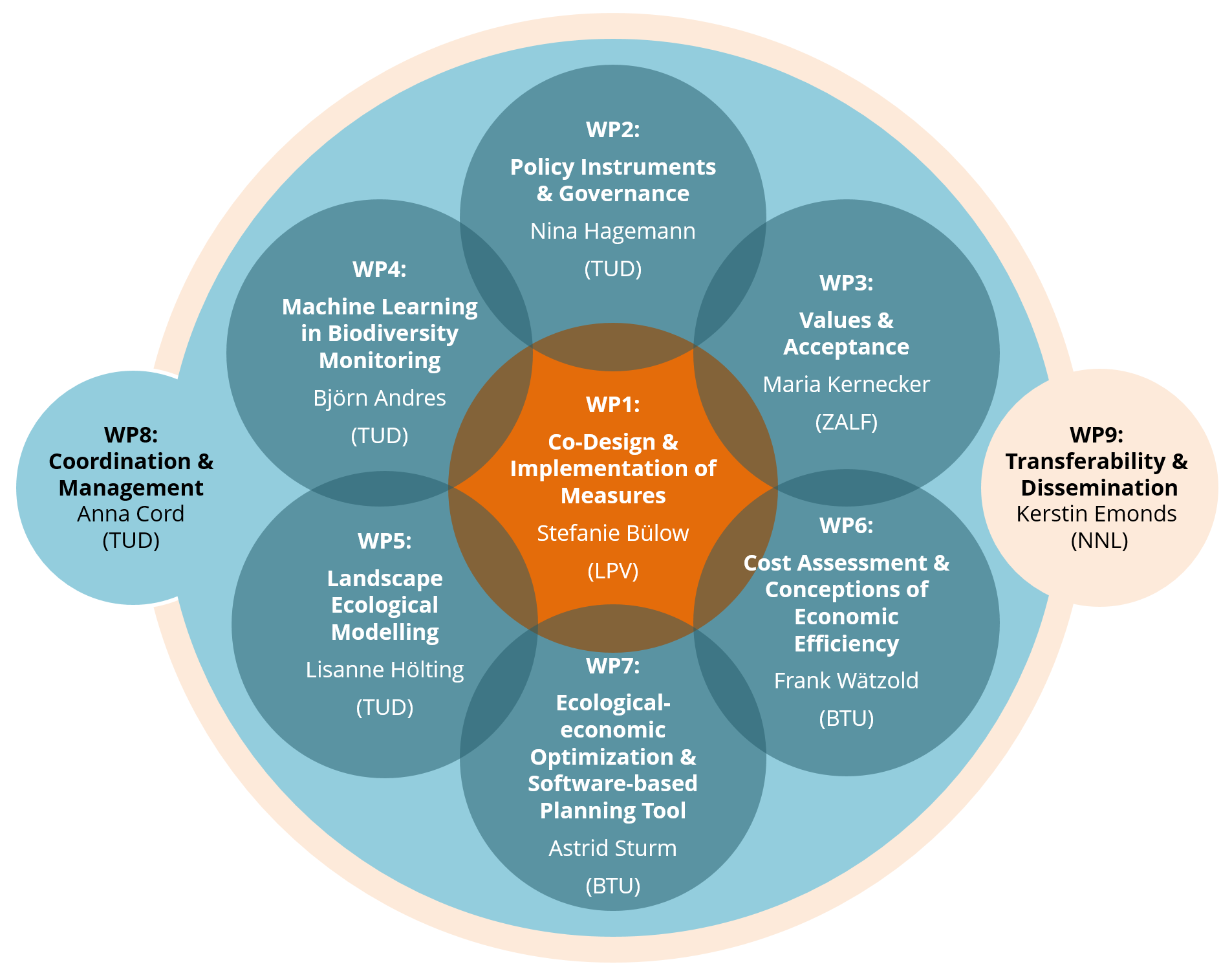
In a co-design process, practical measures for the conservation of biodiversity are developed and implemented on a pilot basis together with farmers in the model region, taking into account regional biodiversity goals and guiding principles.
Existing policy instruments and governance structures will be analyzed in terms of their potential to support result-based and collaborative policies in order to derive target group-oriented policy recommendations for an innovative policy mix.
The values and role perceptions of different stakeholders will be analyzed to gain a comprehensive understanding of how biodiversity and ecosystem services are valued.
A deep learning model for automatic bird call identification is developed.
Spatial models of biodiversity and ecosystem services are used to determine the effectiveness of landscape-level interventions.
The costs of the measures, as well as “value-based” cost factors, are identified to further develop result-based and collaborative measures.
Ecological-economic models will be used to optimize the allocation of measures and to develop a software-based planning tool for the model region. Transferable optimization software for cooperative reward analysis will be developed.
Coordination and management includes the internal project structure and networking with other projects and partners.
All findings and results of the project will be communicated and consolidated beyond the model region. The transferability of the developed measures and methods will be tested in three cooperating biosphere reserves.
and implementation of practical measures for the conservation of biodiversity and ecosystem services, taking into account regional biodiversity targets and guiding principles
In a co-design process with the stakeholders of the model region, measures for the conservation of biodiversity and the protection of ecosystem services are developed, which are implemented on agricultural land by the farms participating in the project. These measures will be specifically tailored to the ecological and socio-economic conditions in the model region. The concrete design will take into account regional biodiversity objectives and normative guiding principles for the model region, as well as the costs and challenges faced by farmers and will be developed together with stakeholders from civil society. It is embedded in policy instruments (results-based and cooperative remuneration) and governance structures.
regarding conservation measures for biodiversity and ecosystem services shall be increased by investigating social acceptance
With the help of interviews as well as ethnographic methods and empirical social research (e.g. transect walks, analysis of social networks, survey of civil society), important factors for the acceptance of measures and policy instruments as well as societal values regarding biodiversity and ecosystem services in the model region will be collected. On this basis, tailor-made concepts and formats (including local events, workshops, day excursions, educational modules “Agriculture and Biodiversity”) for educational and public relations work within and outside the model region will be developed and implemented to promote the appreciation of biodiversity and ecosystem services in society.
of suitable areas and modeling of the expected ecological effects of measures in the landscape context of the model region
The ecological effects of current and potential measures for the protection of biodiversity (birds, plants, grasshoppers, bats) and ecosystem services (carbon storage, water purification) will be assessed in the landscape context, i.e. taking into account environmental gradients, land use, landscape structure (composition and design), in order to identify particularly suitable measures and their spatial distribution in the landscape. Spatially explicit results of the accompanying sociological research (transect walks with farmers), third party data (e.g. Central Species Database of the LfULG) and datasets collected in the project (e.g. breeding bird mapping) will be used for the modeling to more accurately predict habitat suitability for the selected indicator species.
for best possible transference
While the measures are developed, implemented and scientifically accompanied in the context of the model region, ECO²SCAPE is also dedicated to the transferability of the instruments, measures and concepts developed in the project. The aim is to analyze the factors, adaptation options and barriers for successful transferability. This includes the analysis of individual and connecting factors of spatial and societal/demographic structures, regional funding frameworks, governance structures, operational structures and values of civil society actors. Selected results will be tested for transferability with the administrations of the cooperating biosphere reserves.
for acoustic biodiversity monitoring will be tested and developed further
Based on ecoacoustic recordings in the model region, new machine learning methods will be developed for the detection of bird species in the agricultural landscape. Low-cost devices (AudioMoth model) with long battery life and large storage capacity will be used to record the audio data, which can also be used to record grasshoppers and bats in the project. Ecoacoustic monitoring results will be compared and linked with independent mapping and with model results. In the long term, farmers and conservationists will use this innovative technology to obtain information on the effectiveness of bird conservation measures. In ECO²SCAPE, concepts for result-based compensation incorporating monitoring results will be tested.
by means of economic-ecological models and a software-based planning tool
Ecological-economic models will be developed that integrate results from cost calculations, eco-acoustic monitoring and landscape ecological models and take into account farmers’ values. These models will be used to (i) investigate how cooperative payments can be made economically efficient in a real landscape, (ii) develop optimization software using the model region as an example (but transferable in principle), which will allow the efficiency of result-based and measure-based payments to be compared, and (iii) develop, together with the LPV, a software-based planning tool adapted to the specific needs of the region, which will allow the cost-effective optimization of landscape-level measures in terms of biodiversity and ecosystem services.
by integrating biodiversity enhancing measures into policy instruments and governance structures
Based on the measures developed, an innovative policy mix will be designed. The focus is on integrating result-based and cooperative rewards into existing policy instruments at the state level. In addition to economic instruments, regulatory (especially technical law) and informational (consulting and information services) instruments will be considered. Furthermore, it will be investigated which governance and incentive structures are necessary so that measures can be developed and implemented independently by different actors (e.g. nature conservation associations, local groups, educational institutions) in the future. In addition to decision-makers and farmers, private and local financiers as well as potential “funding agencies” from civil society (foundations, associations, companies) will be included, who can develop and implement measures in the sense of bottom-up processes in the future.
The model region is located in North Saxony, is part of the nature region “Sächsisch-Niederlausitzer Heideland” and belongs to the field of action “Altkreis Delitzscher Land” of the practice partner LPV. The region is characterized by intensive but also diverse land use, contains designated biologically unique protected areas and is representative for many cultural landscapes in Germany.
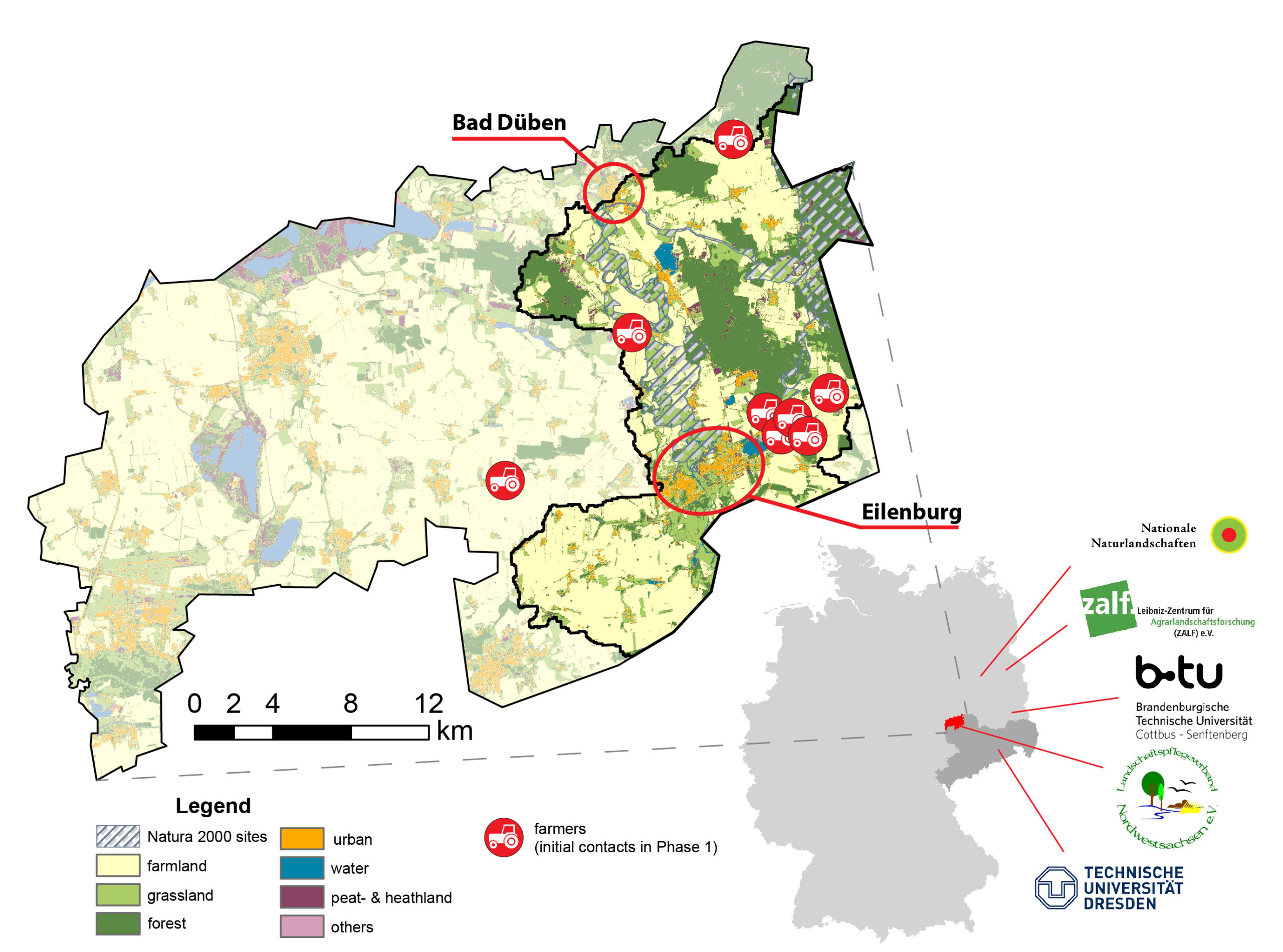
ECO²SCAPE will develop measures for the conservation of biodiversity and ecosystem services together with farmers and other stakeholders on the basis of regional biodiversity targets and guiding principles (co-design), pilot these measures and accompany them scientifically with an innovative and systemic research approach. Selected existing measures on arable land and grassland will be redesigned in such a way that they meet with the broadest possible acceptance among relevant stakeholders and in civil society and are efficient from an ecological and economic perspective. This includes, for example, management methods in the field of extensive cereal cultivation (reduced crop density in the field, reduced tillage, flowering catch crops and undersowing), protective strips (flower strips, fallow strips, green strips) or extensive grassland use (rest during the breeding season, extensive grazing). An important element in the development of the measures will be the design of result-based reward approaches and cooperative measures.
Here you can find and access (follow links in bold) our project results updated on a continuous basis.
Factsheet 1: Land use in the case study area (Download)
Factsheet 2: Machine Learning for Biodiversity Monitoring (Download)
Factsheet 3: Result–based schemes for nature conservation in agricultural landscapes – challenges and outlook (Download)
Factsheet 4: Co-Deisgn in ECO²SCAPE (Download)
Factsheet 5: Cost comparison of audiomonitoring and ornithological surveys (Download)
Markova-Nenova, N., Engler, J. O., Cord, A. F., Wätzold, F. (2023): Will passive acoustic monitoring make result-based
payments more attractive? A cost comparison with human observation for farmland bird monitoring. Conservation Science and Practice. e13003
Schwengbeck L, Hölting L, Witing F (2023) Modeling Climate Regulation of Arable Soils in Northern Saxony under the Influence of Climate Change and Management Practices. Sustainability. 5:11128.
Hölting L, Busse M, Bülow S, Engler JO, Hagemann N, Joormann I, Kernecker ML, Larondelle N, Sturm A, Turkelboom F, Wätzold F, Cord AF (2022): Co-design: Working with farmers in Europe to halt the loss of biological diversity. Ecological Evidence and Solutions. 3:e12169.
Hölting, L., Speck, S., Rodriguez Barrera, G., Wendler, J. (2022) Assessing the importance of flowering weeds in agricultural landscapes. Conference Poster (ECCB, 2022, Prague)
Kernecker, M., Cord, A., Hagemann, N., Wendler, J., Knierim, A. (2022) Farmers’ relational values shape autonomy in biodiversity conservation practice -a case study from Saxony, Germany. Conference Poster (FEdA Conference, 2022)
Ogawa, R., Engler, J., Cord, A. Habitat selectivity of a farmland bird depending on the presence of agri environment schemes. Conference Poster (FEdA Conference, 2022)
Cord, A. et al. (2022) Co-designing ecologically and economically efficient measures for conserving biodiversity at landscape level. Conference presentation (IALE, 2022)
The transdisciplinary ECO²SCAPE consortium consists of two universities (TU Dresden, BTU Cottbus-Senftenberg), one non-university research institution (Leibniz-Centre for Agricultural Landscape Research e.V.) and two practice partners (Landschaftspflegeverband Nordwestsachsen e.V., Nationale Naturlandschaften Deutschland e.V.) and combines expertise from the fields of agricultural sociology, political science, ecoacoustics, machine learning, landscape ecology, environmental economics and ecological-economic optimization.
More information about our chair can be found on the homepage.
➝ Technische Universität Dresden (TUD):
Chair for Computational Landscape Ecology: Prof. Dr. Anna Cord, Dr. Lisanne Hölting, Dr. Nina Hagemann, Dr. Jan Engler, M.Sc. Julian Wendler
Chair for Machine Learning in Computer Vision: Prof. Dr. Björn Andres, M.Sc. David Stein
➝ Landschaftspflegeverband Nordwestsachsen e.V. (LPV): Stefanie Bülow, Andreas Vierling
➝ Brandenburgische Technische Universität Cottbus-Senftenberg (BTU): Prof. Dr. Frank Wätzold, Dr. Astrid Sturm, Dr. Charlotte Gerling, Dr. Nonka Markova-Nenova
➝ Leibniz-Centre for Agricultural Research e.V. (ZALF): Dr. Maria Kernecker
➝ Nationale Naturlandschaften e.V. (NNL): Dr. Neele Larondelle, Kerstin Emonds
➝ Prof. Dr. Andrea Knierim (Agricultural Sociology; University of Hohenheim)
➝ Dr. Stefan Schröder (Information and Coordination Center for Biological Diversity, Federal Agency for Agriculture and Food)
➝ Dr. Michael Beckmann (Helmholtz Centre for Environmental Research – UFZ, Landscape Ecology)
➝ Honorary Professor Dr. Dr. Martin Drechsler (Helmholtz Centre for Environmental Research – UFZ; Ecological-Economic Modelling)
➝ Thomas Klepel (Dübener Heide Nature Park)

On the 26th of September 2024 the final event of the ECO²SCAPE project under the topic “Shaping the future: Co-design for more biodiversity in agricultural
A publication on carbon sequestration in agricultural soils has been produced as part of a master’s thesis: https://doi.org/10.3390/su151411128 (Schwengbeck et al. 2023). Lea Schwengbeck created
ECO²SCAPE offers excursions to the biosphere reserves involved in the project to allow for the exchange between farmers. Last year, we went to the Saxon
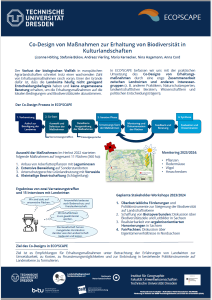
On May 9 and 10, 2023, the FEdA conference “How do we get into transformation?” took place in Frankfurt/Main. Representatives of the chair actively participated:
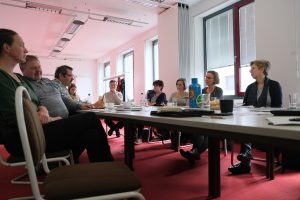
On 24.03.2023 the second networking meeting between farmers and scientists within the ECO²SCAPE project took place. At the beginning, the results of the field work

On November 28 2022, the workshop “Success factors for implementing outcome-based measures to promote biodiversity and ecosystem services in agriculture” brought together scientists, practitioners and